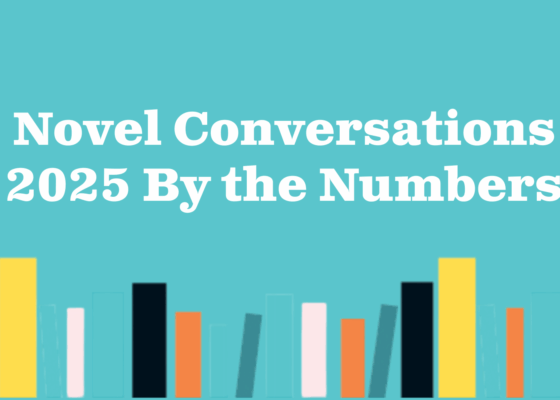Frankenstein Friday: Dr. Monique Morgan Scholar Essay
August 31, 2018Having wrapped up our week-by-week reading of Frankenstein, it’s worth reflecting on the legacy of this enduring tale. The following essay from Dr. Monique Morgan of Indiana University helps readers…
Having wrapped up our week-by-week reading of Frankenstein, it’s worth reflecting on the legacy of this enduring tale. The following essay from Dr. Monique Morgan of Indiana University helps readers understand that the novel was its own kind of “strange offspring,” brought to life by the remarkable mind of Mary Shelley.
Dr. Morgan, Associate Professor of English at IU Bloomington, focuses on Romantic and Victorian poetry and prose fiction, though they also include narrative theory, poetics, literature and science, and science fiction. She is concerned with the ways literary form influences readers’ intellectual, ethical, and emotional responses, and with the interactions of different kinds of forms across genres, media, and disciplines. Her current project, Narrative and Epistemology in Victorian Science Fiction, draws upon discussions of methodology in a range of scientific fields to argue that many nineteenth-century science fiction novels expose and defamiliarize the patterns of rational inquiry that underpin both narrative form and scientific investigation.
Read:
Essay: “Frankenstein as Science Fiction”
Dr. Monique R. Morgan
Indiana University Bloomington
Frankenstein is familiar to many through adaptations into horror films and Halloween costumes. Yet Mary Shelley’s 1818 novel is often considered to be a foundational, perhaps the foundational, work of science fiction in English. Why might we consider Frankenstein as a work of science fiction rather than horror, and what difference does it make?
One way to answer this question is suggested by Percy Shelley’s preface to his wife’s novel, in which he claims, “The event on which this fiction is founded has been supposed by Dr. Darwin, and some of the physiological writers of Germany, as not of impossible occurrence.” This “Dr. Darwin” was not Charles Darwin, who became famous decades later with the 1859 publication of On the Origin of Species, but rather Charles’s grandfather, Erasmus Darwin, a famous botanist who thought that simple forms of life could spontaneously generate from inanimate matter. Though scientists of the time were not capable of actually performing Victor Frankenstein’s experiment, Erasmus Darwin was not the only scientist whose work suggested that creating life or reanimating the dead might be possible in the future. Science fiction is founded on such future speculations. It is a genre that imagines a deviation from current norms and realities, but depicts it as a possible extension of current theories, technologies, or norms.
Put another way, Victor Frankenstein does not animate his creature through magic or other supernatural methods, as we would expect in much gothic horror. Instead, he uses science. Shelley highlights this distinction by having Victor study alchemy in his youth, only to give up its occult methods for the study of modern chemistry when he enters the university at Ingolstadt. In so doing, Victor enacts the progress of science as it was described by the respected chemist Humphry Davy. In his 1802 Discourse, Introductory to a Course of Lectures on Chemistry, Davy warned that alchemy had encouraged delusive goals and ineffective methods: “for a long while the means of obtaining earthly immortality were sought for amidst the unhealthy vapours of the [alchemist’s] laboratory. These views of things have passed away, and a new science has gradually arisen. . . . the phenomena of electricity have been developed; the lightnings have been taken from the clouds; and, lastly, a new influence has been discovered, which has enabled man to produce from combinations of dead matter effects which were formerly occasioned only by animal organs.”
This “new influence” was animal electricity, also known as galvanism, named after Luigi Galvani, who discovered that electrical currents could make muscles contract. Galvani’s nephew Giovanni Aldini toured Europe to demonstrate his uncle’s discovery. Aldini connected a Voltaic pile (an early form of battery) to recently slaughtered animals, and produced motion in a dog’s body, a frog’s legs, and an ox’s head. He became infamous in January 1803, when he produced motion in the fist, jaw, and eye of the murderer George Forster, shortly after he had been executed by hanging at Newgate Prison. Mary Shelley would have known about such experiments not only because they were widely reported in the newspapers, but also because one of her companions in Geneva and rivals in the ghost story competition, Dr. John Polidori, witnessed galvanic demonstrations in Edinburgh. In her introduction to the 1831 edition of Frankenstein, Mary Shelley acknowledged animal electricity as an inspiration: “Perhaps a corpse would be re-animated; galvanism had given token of such things.” In the novel itself, we get hints of galvanism in Victor’s childhood interest in electricity, and in his language of “infus[ing] a spark of being” into his creature.
Science fiction is not defined solely based on its imagined extensions of existing science, though. For many critics, a text’s likely effect on its audience is just as important for determining the text’s genre. According to Paul Alkon, “Part of the game for readers of science fiction is to infer. . . the principles, whether of physical law, technological practices, or social custom, that govern an imagined world.” By playing this game and comparing the imagined world to our own, readers will achieve, in Alkon’s words, “both heightened awareness of physical or social arrangements in our world that we ordinarily take for granted and a questioning of those arrangements.” Science fiction presents an alternate world in order to defamiliarize our own world.
In the case of Frankenstein, Shelley imagines a new technological practice but otherwise presents a more or less realistic version of the Europe of her time. The creature, however, is a radically different being, and he sees Europe through radically different eyes. When the creature discusses what he learned from overhearing Felix DeLacey read, he says, “The strange system of human society was explained to me. I heard of the division of property, of immense wealth and squalid poverty; of rank, descent, and noble blood. The words induced me to turn towards myself. I learned that the possessions most esteemed by your fellow- creatures were, high and unsullied descent united with riches. . . . without either he was considered . . . a vagabond and a slave, doomed to waste his powers for the profit of a chosen few.” Because the creature finds the division of property, the exploitation of labor, and the prestige of aristocracy to be strange, Mary Shelley’s readers are encouraged to examine them with fresh eyes, to find them strange and unjust.
The creature’s perspective defamiliarizes much more than income inequality. Indeed, his earliest experiences present some of our most obvious, most taken-for-granted knowledge as though it were a source or surprise, wonder, and fear. The creature says that when, just after his reanimation, he wandered through the forest, “I was delighted when I first discovered that a pleasant sound, which often saluted my ears, proceeded from the throats of the little winged animals.” Soon after, he finds an abandoned campfire, and he “thrust [his] hand into the live embers, but quickly drew it out again with a cry of pain.” The creature must actively learn that birds sing and that fire burns. He is not born with preexisting knowledge; his mind is a blank slate, and he must learn from experience and observation. In this respect, the creature brings to life a thought experiment proposed by the philosopher David Hume. In his Enquiry Concerning Human Understanding, Hume instructs his readers to “suppose a person, though endowed with the strongest faculties of reason and reflection, to be brought on a sudden into this world; he would, indeed, immediately observe a continual succession of objects, and one event following another; but he would not . . . at first, by any reasoning, be able to reach the idea of cause and effect.” Only through repeated observations of certain qualities or events happening together could such a person come to associate them, and infer cause and effect. Shelley thus uses the creature to demonstrate Hume’s philosophical position and to defamiliarize the very process through which we learn about the world.
Mary Shelley’s creature is not the shambling, mute monster of horror films, and Shelley’s novel is much more complex than the popular reception of Frankenstein would suggest. This is not to say that works of horror are simple or that they only induce fear; horror can externalize and critique complex psychological dynamics. Shelley’s Frankenstein shares horror’s psychological complexity, but it also develops science-fictional themes and responses. Shelley presents Victor’s experiment as a rational possibility, and she invites her readers to see through the creature’s eyes – to see more clearly the injustices of society, to see anew the everyday wonders of the world, and to appreciate our capacity to learn. By imagining Victor’s strange offspring, Mary Shelley became the mother of science fiction.
Think:
- One of the crucial differences between Shelley’s novel and many of its adaptations is that the creature tells his own story at great length. How does the creature’s story affect your reaction to him and to Victor? What does the creature’s story add to your understanding of the novel’s main themes and central questions?
- In his introduction to an edition of Frankenstein published in 1974, James Rieger objects, “the technological plausibility that is essential to science fiction is not even pretended at here. The science-fiction writer says, in effect, since x has been experimentally proven or theoretically postulated, y can be achieved by the following, carefully documented operation. Mary Shelley skips to the outcome and asks, if y had been achieved, by whatever means, what would be the moral consequences? In other words, she skips the science.” Do you agree with Rieger’s assessment? What moral consequences does Shelley explore, and how central or tangential is science itself to those moral consequences?
- This essay suggests that Frankenstein is indebted to and influenced by specific scientific ideas and developments of Mary Shelley’s time. In what ways might the novel still be relevant in thinking about 21st-century science? Are there particular sciences or technologies that promise breakthroughs like Victor’s, or that inspire fear like the creature does? How might Shelley’s novel guide us toward a more measured, complex assessment of science and its consequences?
Talk:
Find out how Frankenstein is coming to life in your own community! Organizations throughout Indiana are offering book discussions, read-a-thons, hands-on activities, film screenings and more exploring the big ideas at the heart of Frankenstein. Subscribe to FrankenNews for updates about how Frankenstein is coming alive for Hoosiers in 2018! Share your thoughts on social media using #itsalive.
One State / One Story: Frankenstein is an Indiana Humanities program and has been made possible in part by a major grant from the National Endowment for the Humanities and in partnership with the Indiana State Library and Indiana Center for the Book. Any views, findings, conclusions, or recommendations expressed in this program do not necessarily represent those of the National Endowment for the Humanities.


